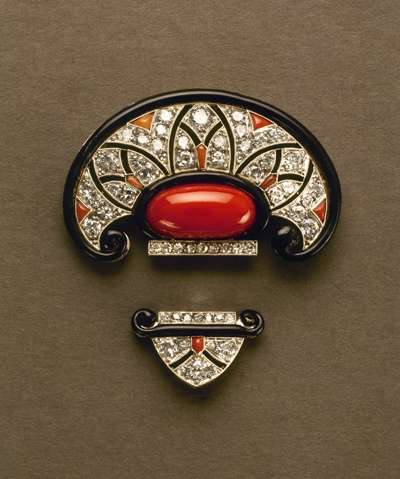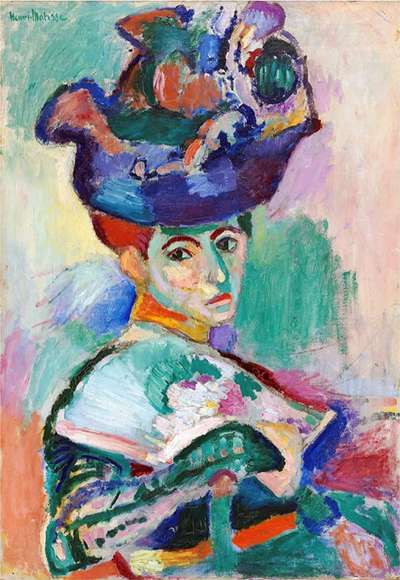
Photo credit: Dreamstime
Art Deco Inspiration
Art Deco was spawned from two major movements in the art world: Cubism and Fauvism.
Exploring Cubism: A Geometric Vision
Cubism is a method of art that displays several different viewpoints at the same time. Most of the elements are cube-shaped or utilize other geometrical shapes. The pioneers of the Cubism movement were Pablo Picasso and Georges Braque. Cubism began in France in 1907 and flourished until the 1920’s.
The Vivid World of Fauvism
Fauvism, on the other hand, was popularized around 1905 by one of the art world’s most avant-garde artists of the time, Henri Matisse. Fauvism utilized vivid, unrealistic colors, often within a structure of more traditional, idealized landscapes, giving the art a highly modernized and new expression.

Photo credit: Dreamstime
The Birth of Art Deco
The fusing of Cubism and Fauvism became known as Art Deco, although that specific term would not be coined until the 1960’s. These two art styles became so popular in the beginning of the 20th century that their essence began to seep into other forms of art, product design, and architecture.
Art Deco’s Broad Influence
Art Deco would become so popular that it became the longest-lasting art style ever seen in modern history and would influence how everything was designed, from jewelry to household appliances, skyscrapers to automobiles, and everything in between.

Photo credit: Dreamstime
The Aesthetic of Art Deco Jewelry
Art Deco represented early, modern 20th-century life of the industrial revolution by utilizing clean, straight lines and geometric shapes with highly contrasting colors. This was a clear break from the frilly, over-decorated garland style of Edwardian style and the flowy, curvy, and pastel attributes of Art Nouveau.
Trailblazers of Art Deco Jewelry
The pioneers of high-end Art Deco jewelry were Cartier, Van Cleef and Arpels, Fouquet, and Maboussin.
Art Deco Jewelry in the Post-War Era
Art Deco jewelry really kicked into gear after World War I. In the spirit of rebuilding and renewal, jewelry design reflected everything that was going on at the time. Technical advancements, new machinery, and innovation really pushed the modern, linear, geometric look of Art Deco design.

Photo credit: Dreamstime
Fashion’s Influence on Art Deco Jewelry Designs
Women’s clothing fashion influenced the type of Art Deco jewelry that was made as well. The sleeveless dress became popular. Women’s roles were changing. While their husbands were off at war, many women worked in the war effort, in factories, hospitals, or administration offices.
Practical Elegance: The Modern Woman’s Jewelry
Overly layered, ruffled dresses were not practical anymore and clothing designers transitioned accordingly by making dresses that reflected the needs and styles of the modern woman. Bare-armed dresses gave jewelry designers the opportunity to design large bangles and wide bracelets in the Art Deco fashion of the day. Large, geometric-shaped pieces, often with multi-colored stones and accented with diamonds, became hugely popular.
Art Deco Jewelry: A Reflection of Societal Transformation
The evolution of Art Deco jewelry during the 1920s and 1930s mirrored significant societal changes, reflecting the era’s progressive spirit and the emancipation of women. These jewelry pieces not only adorned the modern woman but also symbolized the dynamic shift towards modernity and cultural innovation.

Photo credit: Dreamstime
King Tut’s Influence on Art Deco Jewelry
The discovery of King Tutankhamen’s grave in 1922 revealed colors and shapes that melded perfectly with the Art Deco style. Shortly after photos were published worldwide of the incredible find, jewelers were making Art Deco jewelry with ancient Egyptian themes. Scarabs, pharaoh heads, wall paintings from the tomb, and countless other icons were used to create a display of stunning jewelry designs.
From Ancient Inspirations to Global Recognition
The fascination with King Tutankhamen’s artifacts not only revived interest in ancient Egyptian motifs but also set the stage for showcasing these influences on a grander scale. The influences seen in King Tut’s treasures were echoed in the broader context of international art and design, underscoring Art Deco’s global appeal.
The 1922 Paris Exposition: A Global Stage for Art Deco
One of the most influential moments for Art Deco jewelry came in 1922 at the Exposition International des Arts Decoratifs et Industriels Modernes. It was a massive event held in Paris where exhibitors came from all around the globe to attend and display their respective countries’ artwork, crafts, and special niche in the world of design.

Photo credit: Fletcher Blackburn
Cultural Fusion and Art Deco Jewelry
The event only expanded the Art Deco movement by exposing European artisans and designers to an array of International wonders. It wasn’t long before the big-name jewelry houses of the time were making amazing Art Deco jewelry influenced by the far and middle east. The so-called “tutti frutti” color combinations found in Indian Moghul jewelry and Persian art made their way onto Art Deco pieces utilizing special-cut colored stones in a medley of colors.
Art Deco jewelry signed by jewelers like Cartier, Van Cleef and Arpels command extremely high prices at auction today. The Art Deco period flourished until around 1940 with the start of World War II where it fizzled and then had a brief “revival” in the 1960s.

Photo credit: Verma Estate Jewelry
Revival and Reinterpretation in Modern Design
The appeal of Art Deco has seen a revival in the 21st century, as designers and collectors alike rediscover the timeless elegance and bold aesthetics of the era.
Today, Art Deco-inspired jewelry features in high fashion and popular culture, embodying luxury and sophistication with a nod to the historical. Modern interpretations often blend contemporary techniques with the traditional motifs of the 1920s and 1930s, resulting in pieces that resonate with both nostalgic and new audiences.
The trend highlights a cyclical appreciation of art styles, proving that Art Deco continues to influence even in the digital age.

Photo credit: The Antique Millenial
The Enduring Legacy of Art Deco Jewelry
Art Deco jewelry’s vibrant legacy endures, captivating audiences worldwide through exhibitions and fetching record prices at auctions. Showcasing exceptional craftsmanship and artistic innovation, this iconic style continues to evolve, enchant enthusiasts, and affirm its place as a living art form within the cultural and artistic landscape.
Selling Art Deco Jewelry
Are you considering selling vintage Art Deco Jewelry? Just fill out the form below and a senior jewelry buyer will contact you with a verbal quote. If you are satisfied with the estimate, we’ll make an appointment for an in-personal appraisal of your vintage Art Deco Jewelry and immediate cash offer.
Call: 310-499-4535
Text: 310-896-8623
GET A FREE QUOTEGet a Free Quote
Los Angeles Jewelry Buyer simplifies the process of selling vintage Art Deco Jewelry in Los Angeles for several compelling reasons:
- Local Convenience: Avoid the hassle of shipping. Complete your sale directly and immediately with us.
- See Every Step of the Evaluation: We prioritize transparency, conducting all assessments in your presence, ensuring your jewelry is always within sight.
- Expertise You Can Trust: Our evaluator is GIA (Gemological Institute of America) trained and certified, assuring you of their expertise in the diamond industry.
- Guidance Without Pressure: If your antique jewelry isn’t a fit for us, we’ll guide you to the best selling options and recommend other buyers. There’s no obligation to sell to us.
- Free Verbal Appraisals: We don’t charge for verbal appraisals. Our goal is to assist you in selling your vintage jewelry while gaining your trust and business.
Interested in learning more about why we’re your top choice for Art Deco Jewelry in Los Angeles? Click on this link to discover additional reasons that make us the premier destination for selling vintage jewelry: The Best Place to Sell Vintage Jewelry.